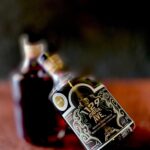Aniseed, wormwood, and fennel. When talking absinthe, this is the holy trinity. It’s also what makes our Absinthe Gimlet so delicious.
Every bottle of the spirit contains these three botanicals, which gift the green drink its signature, herb-forward, licorice-y taste. In the case of local absinthe-maker Lawrenceville Distilling Co., this holy trio blends with brandy and distills down, making their signature 1129 Ridge Ave. Absinthe Traditionnelle.
Absinthe Education
Though the spirit has experienced a rise in popularity over the last few years, it’s had an eventful past (to say the least). Absinthe, or, as it’s famously known, the “green fairy,” has been rumored to cause hallucinations; it’s even been banned from the U.S. because of its potency and potentially toxic nature.
But, sorry to rain on your parade, absinthe does not induce madness or visions. According to Lawrenceville Distilling Co.’s FAQ page, we now know these false side effects are from alcohol poisoning and poor product regulation, leading to cheap variations with harmful ingredients.
(Another theory is that the wine industry, frustrated that drinkers were trading wine for the green stuff, started a smear campaign against absinthe. Their propaganda claimed that the spirit was responsible for violence, madness, and other dangerous acts.)
Lawrenceville Distilling Co.’s Absinthe
Lawrenceville Distilling Co., who launched their green absinthe in 2019, has even released a variation: Absinthe Rouge. Instead of absorbing chlorophyll from a bundle of hyssop, melissa, and wormwood for color, the spirit’s vibrant, luscious red comes from hibiscus. It gives the rouge spirit a more approachable, floral taste, rather than the powerful herbal qualities of the verte absinthe.
Both have plenty of uses. Try either absinthe the original way, prepared via La Louche, a process that slowly adds water to the absinthe, diluting the spirit and transforming it into a cloudy, floral-forward beverage. (A sugar cube is often in this method. You can pour water over the sugar cube, or it mix it in.)
You can also use absinthe as a rinse to prime glasses for cocktails. The current TABLE favorite, fully showcasing the spirit’s “big flavor,” is a play on the classic gimlet, using absinthe and lime juice.
Print
Absinthe Gimlet
Description
A boldly flavored gimlet with absinthe and lime.
Instructions
- In a cocktail shaker, mix the absinthe and lime juice with ice.
- Pour over rocks, and add a splash of soda.
Story by Maggie Weaver
Photography and Styling by Keith Recker
Subscribe to TABLE Magazine’s print edition.
